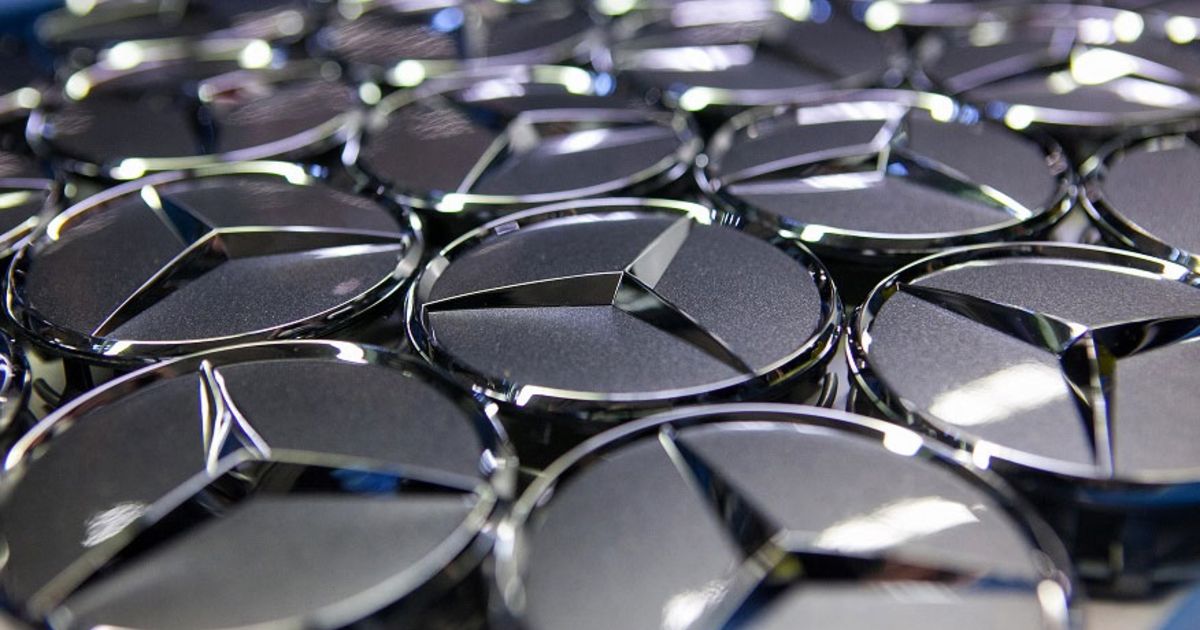
Automakers are driving toward eliminating emissions in their vehicle fleets, production plants and supplier networks.
Mercedes-Benz said Monday it will more than halve its carbon footprint per passenger car by the next decade compared with 2020 levels.
The luxury marque will source 70 percent of its energy needs for production through renewable energy by 2030 by rolling out solar and wind power projects at its plants and through power purchase agreements.
In an online presentation, Mercedes-Benz CEO Ola Källenius described climate change as “our generation’s most important task.”
Mercedes’ environmental focus will significantly affect the automaker’s suppliers globally.
Sustainability will be an “awarding criteria,” Källenius said.
“If you want to do business with us in the future, you need to have a sustainable business strategy,” he said.
Mercedes-Benz Chief Technology Officer Markus Schäfer said suppliers representing 90 percent of the automaker’s purchasing volume will supply CO2-neutral parts.
“We have integrated sustainability requirements into all our purchasing activities and awarding processes,” Schäfer said.
Mercedes-Benz production and supply chain boss Jörg Burzer said the automaker will make vehicle production CO2 neutral this year and CO2-free in Europe.
“It’s our ambition to make all Mercedes-Benz factories renewable energy production sites,” Burzer said during the presentation. “Going forward, we will increase our use of clean energy, and we will also produce it on-site.”
In the U.S., Mercedes will power its Vance, Ala., assembly plant via an 80-megawatt Alabama Power solar farm. As part of a 15-year power purchase agreement, Mercedes-Benz will receive the entire electric output from the project after it goes live in March 2024.
“We not only want to produce the most desirable cars in the world, we also want to produce” them sustainably, Burzer said.
Mercedes’ factories are “already CO2-free for electricity needs,” Burzer said.
Mercedes is electrifying its fleet — the brand expects electric vehicles to account for half of global sales by 2025. It will go all-electric by 2030 where market conditions allow. The portfolio currently includes six battery-electric vehicles.
“The desire for individual mobility keeps growing,” Källenius said in a statement. “Our mission is to meet this need in a sustainable way.”
In the U.S., Mercedes is gearing up to begin EV production at its 6 million-square-foot assembly plant 40 miles southwest of Birmingham, Ala.
Production of the electric EQS SUV should begin in June, while assembly of the EQE crossover will start next October, according to AutoForecast Solutions. Once production ramps up, the factory will churn out 6,000 EVs a month.
Last month, Mercedes opened a battery pack plant at the Alabama site and said it would begin sourcing battery cells in the U.S. by mid-decade. Battery supplier Envision AESC, headquartered in Japan, will build a U.S. factory to supply a new generation of battery components for Mercedes.
Mercedes is targeting another emissions generator — the battery that powers EVs.
Battery manufacturing accounts for more than half of the vehicle’s life cycle CO2 emissions. By shifting to CO2-neutral cell production, it is possible to cut emissions for battery pack production by 20 percent.
Mercedes is working on energy-dense chemistries geared toward long-range models. The automaker also is investigating less expensive but less powerful lithium iron phosphate, or LFP, batteries for its entry-level models.
“There’s a renaissance of LFP,” Källenius said earlier.